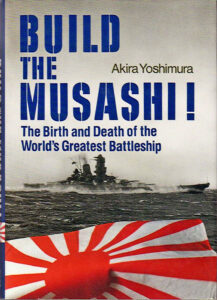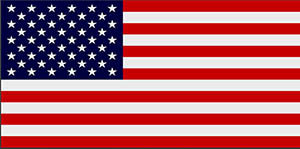
“BUILD The MUSASHI.” The Making and Sinking of the World’s Biggest Battleship. By Akira Yosimura. Admiral lsoroku Yamamoto, the man who planned the daring attack on Pearl Harbor in 1941, said that the three great follies of the world were the Great Wall of China, the Pyramids, and the battleship Musashi. Yamamoto understood that sheer size and firepower would not be decisive factors in the battle for naval supremacy in the Pacific War. Commissioned in August of 1942, eight months after her sister ship, Yamato, the Japanese battleship Musashi was massive––upright it would have approached the size of the Chrysler Building (New York City). Outfitted with eighteen-inch armor plating and nine eighteen-inch guns, the largest ever mounted on a warship, the 72,000-ton Musashi was considered by its creators to be invincible and unsinkable. Yet during its two years of active duty with the Combined Fleet, it never fired a single shot against another ship. The impressive battleship was destroyed, as Admiral Yamamoto had predicted, by torpedoes and bombs. The super-battleship Musashi was sunk by an estimated 19 torpedo and 17 bomb hits from American carrier-based aircraft on October 24, 1944 during the epic Battle of Leyte Gulf. Over half of her 2,399 crew were rescued but 1,023 men were lost. Admiral Toshihira Inoguchi elected to go down with his ship.
Akira Yoshimura’s dramatic reconstruction of the birth of the Musashi portrays a nation preparing for total war. Under these extreme conditions, courage, genius, and integrity coexisted with brutality, folly, and paranoia. During the more than four years it took to build and outfit it, shipyard engineers and their Navy mentors were faced with seemingly insurmountable technical problems and plagued by natural calamities and the constant fear of espionage. The solutions they found to each successive crisis were sometimes brilliant, sometimes absurd. Build the Musashi is a tribute to the men who achieved this engineering marvel and a testament to the excesses of bureaucratic militarism. The ship shown on the book jacket is the battleship Yamato, which was identical in size and design to the Musashi. Such was the secrecy of the Musashi project that no clear photograph of the ship survived the war. 1992 hardback edition, with dust jacket. 192 pages, 20 black and white photos, an index, 1 map, an appendix that includes 28 diagrams of the ship. Large Musashi ship diagrams printed inside the front and back covers.
Note: This book was also published in a softbound edition under the title of “Battleship Musashi! Same author, same material.
Good Cond. $29.77

In March 2015, the American philanthropist and Microsoft co-founder, Paul Allen, and his team of researchers located the wreck of Musashi in the Sibuyan Sea. The ship lies at a depth of around 3,300 feet. The wreck was revealed to be in several pieces with most of the hull amidships appearing to have been blown apart after leaving the surface. The bow section from the number one barbette forward is upright on the sea floor while the stern is upside down. The forward superstructure and funnel is detached from the rest of the ship and lies on its port side.
The Author:
Japan’s leading non-fiction writer on military and naval subjects, Akira Yoshimura was born in Tokyo, Japan, in 1927. His published works in Japanese include a best-selling account of the construction and wartime role of the Zero fighter.
Other books of interest:
The End of The Imperial Japanese Navy
I-Boat Captain – hardback edition
I-Boat Captain – paperback edition
The Japanese Submarine Force and World War II
A Battle History Of The Imperial Japanese Navy (1941-1945)






